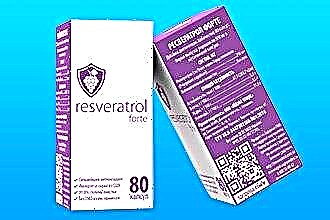Diet for atherosclerosis: general principles of the diet
With atherosclerosis, it is necessary to follow a diet to reduce the risk of developing cardiovascular disease (coronary artery disease), which leads to complications.
Change the amount and nature of food consumed in order to:
- improve tissue trophism (through activation of blood circulation);
- adjust the biochemical composition of the blood;
- restore normal metabolism (metabolism) in the walls of blood vessels and myocardium;
- reduce the ability of blood to clot;
- adjust weight;
- normalize the activity of the nervous system.
To achieve these effects, adhere to the following principles:
- limit the energy value of food consumed to the required minimum in order to maintain an ideal body weight;
Energy requirements depending on lifestyle are shown in the table:
| Occupation | Daily calorie requirement |
|---|---|
| Sedentary work that does not require the activation of the resources of the cerebral cortex | 2200 |
| Mental work at the office table | 2500 |
| There is regular physical activity in free time during passive work | 3000 |
| The occupation involves hard physical labor | Up to 5000 |
- prioritize these products:
- vegetables and fruits;
- unrefined grain (limited to coarse bread);
- dairy products with a reduced fat content (drinking fresh village milk will have to be postponed until better times);
- lean meats;
- fatty fish (yes, this is for the polyunsaturated omega-3 fatty acids);
- the total amount of consumed fats should not exceed 30% of the energy spent per day, while:
- saturated fat should be one third or less;
In a low-calorie diet (aimed at losing weight), they are partially replaced with complex carbohydrates, seafood fats and vegetable oils.
- cholesterol is consumed up to 300 mg per day (after all, it is also synthesized by the liver);
- Limiting the amount of fast sugars (preferring low-carb sweets, since hyperglycemia sets the stage for atherosclerotic plaque);
- in the presence of hypertension or overweight, reduce the consumption of sodium chloride to 5 g / day;
- limit alcohol as much as possible.

If the patient is sick with diabetes mellitus, then dietary recommendations are obtained from an endocrinologist.
Recommended food menu for the week
Meals for the preparation of the diet
Dairy and fermented milk products from the table are presented in fat-free form.
| Name of the dish | Weight (g) | Proteins (g) | Fat (g) | Carbohydrates (g) | ||||
|---|---|---|---|---|---|---|---|---|
| First breakfast | ||||||||
| Curd pudding, protein steam omelet, vegetable oil vinaigrette, buckwheat porridge, coffee with milk, tea with milk | 150, 75, 230, 90, 180, 180 | 16,5, 6,1, 3,3, 4,3, 2,9, 1,5 | 6,7, 6, 10,7, 4,8 — — | 30,8, 1,7, 18,1, 25,8, 4,6, 2,3 | ||||
| Lunch | ||||||||
| Fresh seaweed salad with apples in vegetable oil, kefir | 125, 200 | 0,8, 5 | 10, 7 | 6,7, 9 | ||||
| Dinner | ||||||||
| Vegetarian cabbage soup, pearl barley soup with vegetables, low-fat boiled veal, steamed cutlets, cabbage stewed in tomato sauce, mashed potatoes, dried fruit compote | 250, 500, 55, 100, 120, 175, 180 | 1,7, 2,9, 13,6, 16,8, 2,8, 3,8, 0,8 | 6,1, 4,9, 8,9, 10,2, 3,9, 5 — | 10,3, 26,8, — 7,5, 10, 22 — | ||||
| Afternoon snack | ||||||||
| Rosehip broth, apple | 200, 100 | — 0,2 | — — | — 9,2 | ||||
| Dinner | ||||||||
| Boiled cod, baked cod, carrots stewed with prunes, pilaf with fruit, tea | 85, 85, 190, 180, 200 | 1,6, 17,9, 3,3, 3,8 — | 4,6, 5,4, 13,5, 12,2 — | — 5,8, 38,6, 76,6 — | ||||
| Additionally | ||||||||
| Bran bread, white bread, sugar | 150, 100, 35 | 14,2, 7,6 — | 7,1, 0,9 — | 54,3, 47, 34,7 | ||||
You can combine the proposed dishes to your liking, but the total amount of proteins is 90-100 g, fats - 70-80 g (vegetable half), carbohydrates - 300-350 g, and total calories - 2200-2500.
Atherosclerosis of cerebral vessels: what to look for
Proper nutrition for atherosclerosis of the vessels of the brain is based on the main principles described above. However, the diet is enriched with foods that contain substances that have a beneficial effect on the functioning of brain tissues in conditions of a threat of impaired blood supply.
These active food components include:
- Beta carotene. It protects brain cells for a long time. Contained in bright fruits - pumpkin, carrots, mango, melon, papaya.
- Vitamin B1. It inhibits the aging of the cerebral cortex, improves the delivery of oxygen to neurons, and helps the intracellular process of energy production. It contains animal products: chicken, veal, fish, as well as nuts, legumes.
- Vitamin B6. Helps produce neurotransmitters (special molecules that transmit commands in the nervous system). Sources - eggs, dairy products, wheat germ, potatoes, chicken, turkey, red meat, marine products (fatty varieties of sea fish), legumes.
- Vitamin B9. Reduces the risk of damage to the walls of blood vessels and the formation of blood clots. It is found mainly in plant products - vegetables (green leafy), fruits, nuts.
- Vitamin B12. Responsible for myelination (covering with special cells) of nerve fibers. This is necessary for fast transmission of impulses (for high speed and accuracy of the occurrence of a reaction in response to a stimulus).
- Vitamin C. Shows an antioxidant effect (stabilizes cell membranes), helps the absorption of iron (and it is responsible for the level of hemoglobin, which carries oxygen to the cells of the central nervous system, protecting the brain from hypoxia). Found primarily in green vegetables and citrus fruits.
- Omega-3 fatty acids. Prevents the degeneration of neurocytes (which occurs due to hypoxia due to a chronic decrease in blood flow in the basin of one of the cerebral vessels). Contained in fatty fish - anchovy, sardine, tuna, salmon.
- Iodine. It is so important (especially at the stage of brain growth) that with a lack of it, the child will grow up mentally disabled. This element is rich in seafood (algae, representatives of the fauna), beef liver, milk, egg yolk.

Diet recommendations for atherosclerosis of the vessels of the brain and neck are similar. The only thing is that you can increase the proportion of foods that thin the blood (because with atherosclerotic lesions of the carotid arteries, there is a high risk of blood clots and blockages of one of the cerebral arteries). They will be discussed below.
Lesion of the vessels of the lower extremities: what products are required for use?
Composing a diet for atherosclerosis with a predominant lesion of the arteries of the extremities, take into account the possible complications of this form of the disease. Since the main problem (especially with damage to the vessels of the legs) is trophic disorders (non-healing ulcers, gangrene), the patient's diet should be rich in foods that contribute to an adequate blood supply to the tissues.
This list includes:
- Flavonoids (resveratrol, citrine, rutin, hesperidin, quercetin). These substances have truly amazing properties:
 thin the blood;
thin the blood;- maintain the elastic properties of the vascular wall;
- contribute to the disappearance of small blood clots;
- prevent the spread of atherosclerosis;
- resveratrol prevents the formation of blood clots in the vessels (found in the skins of ripe grapes).
- Coumarins. The effect of these substances is to thin the blood and prevent blood clots. They are found in parsley (another plus in favor of salads, most importantly - without mayonnaise), celery, horseradish root, chamomile flowers (instead of green tea, fall in love with herbal tea).
- Vitamin E. One of the actions is to strengthen the vascular wall. It also improves the rheological properties of blood (fluidity). Good sources of this substance are greens, nuts and seeds, vegetable oils.
The diet prescribed for atherosclerosis of the vessels of the lower extremities is also used with confidence when the upper extremities are affected.
Diet for obliterating form
In case of obliterating atherosclerosis, the following are contraindicated:
- fatty meats;
- offal;
- animal fats (oil, lard);
- any fried foods;
- egg yolks;
- rich pastries;
- confectionery.
In such a situation, even a minimal increase in the obstruction to the blood flow turns out to be fatal.
Conclusions
Proper nutrition is an important aspect of atherosclerosis treatment. Its principles are simple and painfully familiar to everyone: a minimum of fatty and sweet, more natural products. Still, the origins of the human race are lost somewhere in the bosom of nature, and not behind the door of the nearest fast food restaurant.
Diet for atherosclerosis - both treatment and prevention. It is in the patient's interest to make it primary (aimed at preventing the onset of symptoms of the disease) by learning the recipes for a healthy kitchen.

 thin the blood;
thin the blood;

